Wheelbarrow with Holly
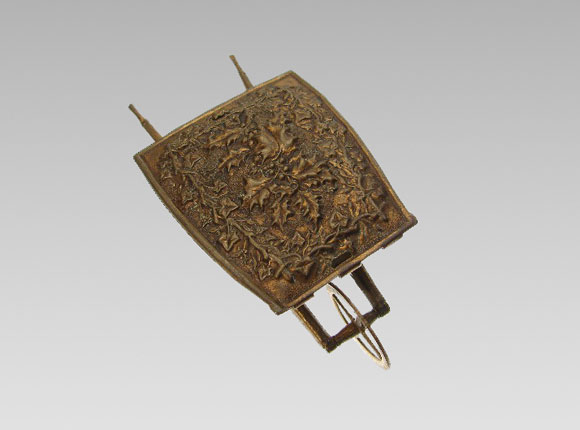
Needle Case
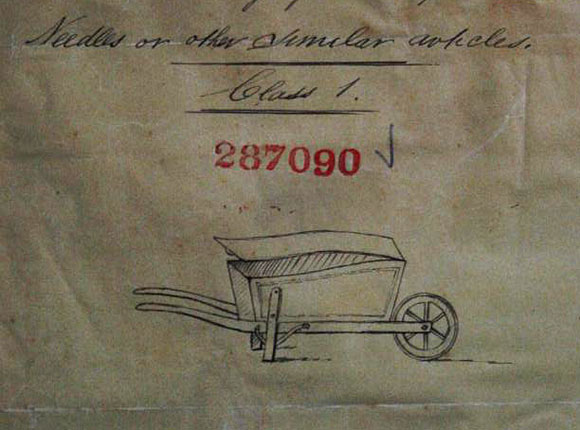
Design Representation
Design Details
Needle Case Type: |
Figural (diamond registration mark on needle case matches design)
|
Patent/Registered to: |
Buncher & Haseler - Birmingham |
Patent/Design Representation #: |
Ornamental Class1: Metal: #287090 |
Patent/Design Registration Date: |
November 18, 1874 |
Location of Patent/Design Registration: |
The National Archives (TNA) - Kew, UK |
Reference #: |
TNA Representation - BT 43/37/287090
TNA Register - BT 44/3/287090 |
Dimensions: |
4.6 x 9.5 x 3.5 |
Material: |
Brass |
Name Variations: |
a) W. Avery & Son – Redditch
b) Baggallays, Westall & Spence - London (the sole source of this information is Horowitz and Mann as no example of this needle case
with this company name has been seen by the authors of this website)
c) Unmarked (the sole source of this information is Horowitz and Mann as no example of this needle case
with this company name has been seen by the authors of this website)
d) W. Woodfield & Sons - Redditch |
Other Variations: |
Wheelbarrow with Roses |
Additional Photographs
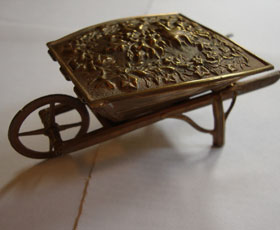
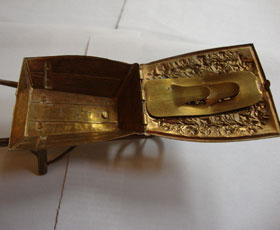
Side and interior views
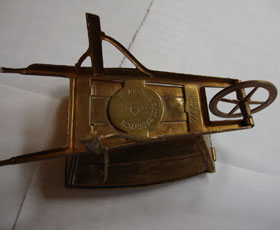
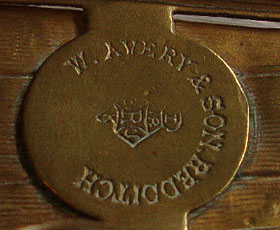
Bottom and Avery signature detail
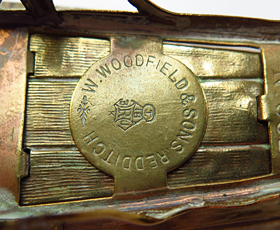
Bottom detail with W. Woodfield and Sons signature (photo taken during 2019 visit with David Chatterley)
Facts

A wheelbarrow is small cart with a single wheel in the front and two supporting legs and handles in the rear. It was originally
designed to be pushed by a single person using the handles to guide the cart. Metal wheelbarrows are used today in the construction
industry and for gardening as they allow a single person to carry a heavier load than they could by hand. Occasionally flowers are
planted in small decorative wooden wheelbarrows that serve as garden ornaments.
History
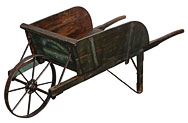
Wheelbarrows were described in documents from Ancient Greece and China, however, the earliest drawing of a wheelbarrow with the wheel
in front like the ones seen today was found in Europe in 1250 AD. These early wooden wheelbarrows were primarily used to carry heavy
loads for construction, mining and agriculture and didn’t become common until the 15th century. During the Victorian Era wheelbarrows
were not only popular as garden carts, but they were also used as playthings for children and assisted Santa Claus in the delivery of toys
on Christmas day like the one pictured below.
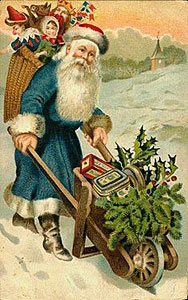
Miscellaneous
Most holly shrubs are evergreens with prickly dark green leaves and red berries. They are most often used for decoration especially
at Christmas time. Clipped holly bushes are also found in formal and informal gardens where they serve as a protective barrier
discouraging people and animals from climbing over them.
















